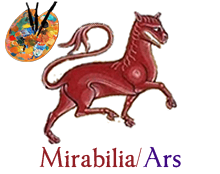Marta MORUECO O’MULLONY
Reflections on the relation between Lilith and the femme fatale: the prostitution at the end of the 19th century
Reflexiones sobre la relación entre Lilith y la femme fatale: la prostitución a finales del siglo XIX
Published in
PDF download:
The study of the figure of Lilith must be set in two very specific moments: first, the Ancient Times, in which the Lilith myth arises; and the nineteenth century, as “reawakening” of this character. This research deals with the relationship between women and evil, and its iconography; The negative view of the feminine was propagated during the Middle Ages mostly due, in large part, to the discovery of the Aristotelian texts, laden with a strong misogynistic content. It will be precisely in the twelfth century when Lilith is adopted as part of the Hebrew imaginary, assuming the negative character of the woman, freeing Eve from the only and absolute responsibility of the Original Sin. This idea will be recovered during the nineteenth century reincarnated in the figure of the femme fatale and the pleasure from the demonic and the forbidden thoughts, coming to fetishize it, which has a direct relationship with the rise of prostitution, in whose artistic representations we can find the Lilith’s seed.


















































































